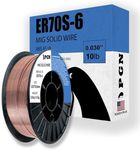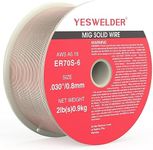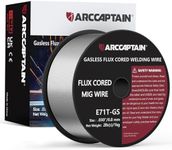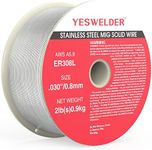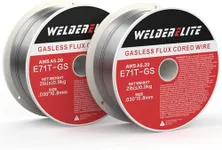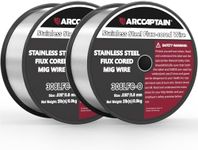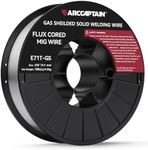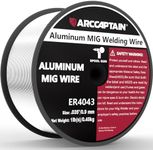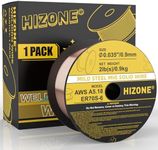Buying Guide for the Best Welding Wire
Choosing the right welding wire is crucial for achieving strong, clean welds. The type of welding wire you select will depend on the material you are welding, the welding process you are using, and the specific requirements of your project. Understanding the key specifications of welding wire will help you make an informed decision and ensure that your welding tasks are completed efficiently and effectively.Material TypeThe material type of the welding wire is important because it needs to be compatible with the material you are welding. Common materials include mild steel, stainless steel, and aluminum. Mild steel wires are versatile and commonly used for general welding tasks. Stainless steel wires are used for welding stainless steel materials, providing corrosion resistance. Aluminum wires are used for welding aluminum and require specific techniques. Choose the material type that matches the base material of your project to ensure proper bonding and strength.
Wire DiameterWire diameter refers to the thickness of the welding wire and is measured in millimeters or inches. It affects the amount of heat and current needed for welding. Thinner wires (e.g., 0.6mm to 0.8mm) are suitable for welding thin materials and provide better control and precision. Medium wires (e.g., 0.9mm to 1.2mm) are versatile and can be used for a range of thicknesses. Thicker wires (e.g., 1.6mm and above) are used for heavy-duty welding and thicker materials. Choose the wire diameter based on the thickness of the material you are welding and the type of welding process you are using.
Welding Process CompatibilityDifferent welding wires are designed for specific welding processes such as MIG (Metal Inert Gas), TIG (Tungsten Inert Gas), and flux-cored welding. MIG welding wires are commonly used for general-purpose welding and provide ease of use. TIG welding wires are used for precision welding and require a separate filler rod. Flux-cored wires contain a flux core that provides shielding gas, making them suitable for outdoor welding where wind might blow away external shielding gas. Choose a welding wire that is compatible with your welding process to ensure optimal performance and results.
Shielding Gas RequirementsSome welding wires require the use of shielding gas to protect the weld from contamination. For example, solid MIG wires typically require an external shielding gas like argon or a mix of argon and CO2. Flux-cored wires may be self-shielding or require an external shielding gas. Understanding the shielding gas requirements is important because it affects the quality of the weld and the equipment needed. Choose a welding wire that matches your shielding gas setup or consider self-shielding wires if you prefer not to use external gas.
Tensile StrengthTensile strength refers to the maximum amount of stress the welded joint can withstand before breaking. It is measured in pounds per square inch (psi) or megapascals (MPa). Higher tensile strength indicates a stronger weld. For general-purpose welding, a tensile strength of around 70,000 psi (480 MPa) is common. For more demanding applications, higher tensile strength may be required. Choose a welding wire with a tensile strength that meets or exceeds the requirements of your project to ensure durability and reliability.
Spool SizeSpool size refers to the amount of welding wire wound on a spool and is typically measured in pounds or kilograms. Smaller spools (e.g., 1lb to 10lbs) are suitable for light or occasional welding tasks and are easier to handle. Larger spools (e.g., 11lbs and above) are more economical for frequent or heavy-duty welding and reduce the need for frequent spool changes. Choose a spool size that matches the scale of your welding projects and the capacity of your welding machine.

